What exacly is URBAN FURNITURE?
Urban or street furniture is a collective term for objects of equipment installed in public spaces.
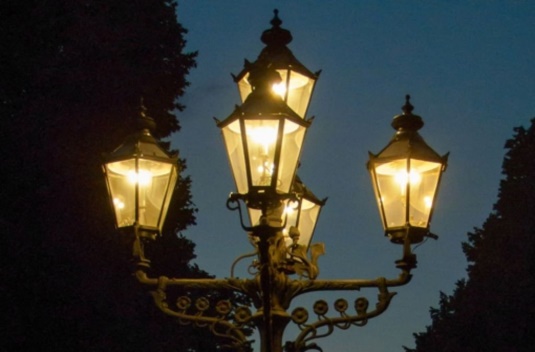
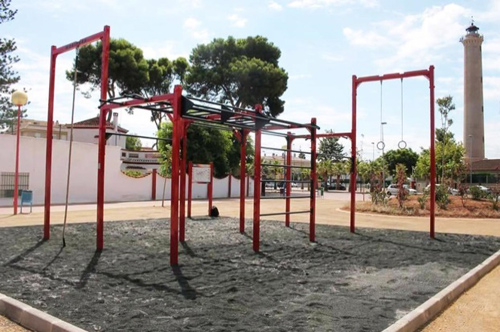
From historical street lights to callisthenics elements
While there were only night lighting and historic fountains in the past, nowadays we find an enormous variety of urban furniture:
Benches, bins, flower pots, bicycle stands, bus shelters, bollards, fences, guideposts, traffic signs, traffic lights, street lamps, fountains, pergolas, actually even dog’s zones, playgrounds and outdoor training elements are counted among street furniture.
Which FUNCTIONS fulfils urban furniture?
The street “furniture” aspect is a relatively contemporary concept. Its functions are primarily utility and adaptation to the environment.
Nevertheless, its visual appearance plays an important role: The installed elements identify the site to the point that on account of typical furniture we can recognise the location. When we see a red telephone box we visualise London and when we see large bicycle parking spaces we imagine Amsterdam. We recognise the famous undulating bench of mosaics of… Parc Guell at Barcelone and the iconic flower tiles of Bilbao.
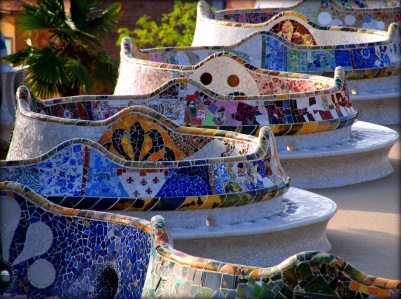
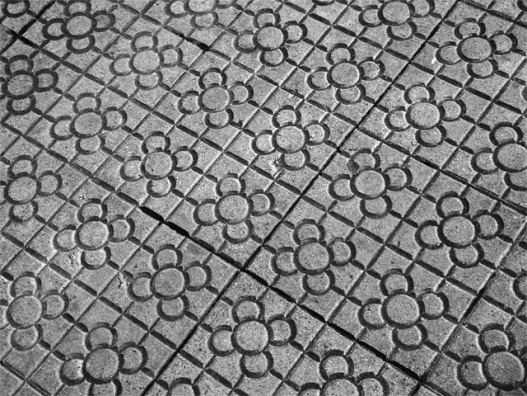
Also safety, accessibility, resistance to weather conditions and to vandalism are taken into account in the design of urban furniture.
What differentiates SUSTAINABLE urban furniture?
Beside of showing usefulness and aesthetics, with regard to future viability urban furniture has to be sustainable.
- In order to be sustainable it has to be DURABLE.
- ECODESIGN puts special consideration for the environmental impacts of the product during its whole lifecycle. Sustainable urban furniture has to be 100% RECYCLABLE at the end of the useful life.
- It is preferably produced with a high percentage of RECYCLED
- It is an advantage if the used materials are MAINTENANCE-FREE (treatment, paint, varnish, etc.) as it SAVES RESOURCES of time and material during the whole lifecycle.
- Sustainable cities and communities count on urban furniture from LOCAL MANUFACTURERS because this means less contamination during transport and the possibility to repair instead of replace.
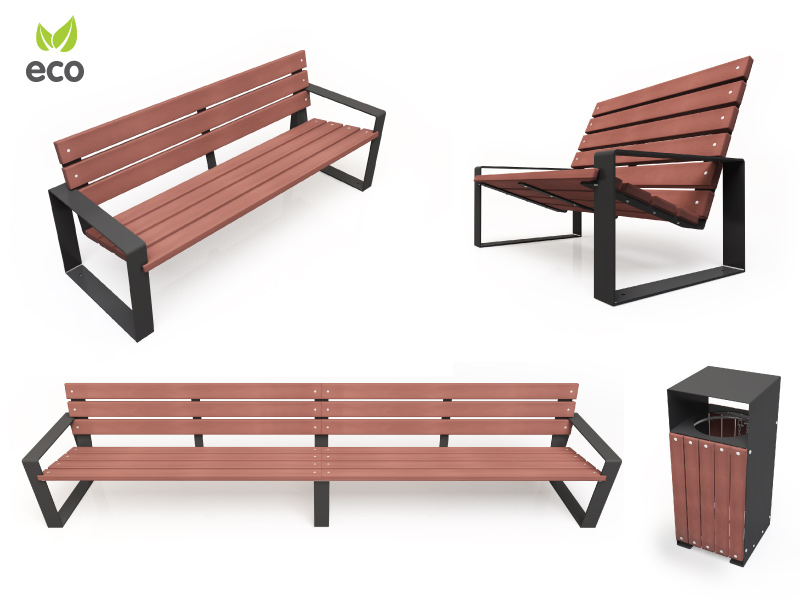
CUBIC line: Aesthetic benches in various formats made of WPC, very comfortable with inclination and high backrest
At Mobipark we produce urban furniture in compliance with sustainability criteria at our sole production site close to Valencia, Spain.
We produce benches, bins and tables made of WPC (wood plastic composite), a material composed of recycled thermoplastic polymer and recycled natural fibre. Apart from the utilization of recycled material its durability is 5 times longer than of natural wood. This, together with the structure of hot-dip galvanised steel makes this urban furniture totally maintenance-free.
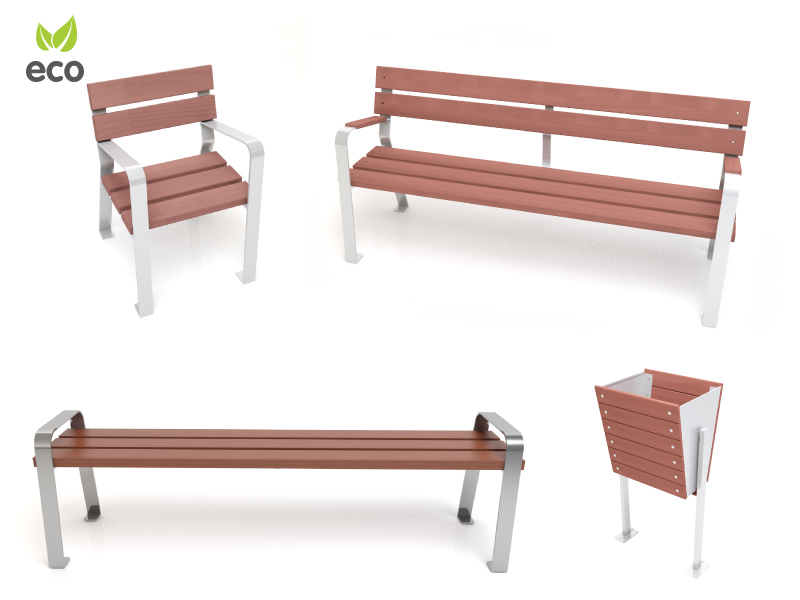
ALAMEDA line: Benches with and without backrest and armsets,
made of WPC and hot-dip galvanised steel
For colour decoration we use HDPE (high density polyethylene) panels type “Ecodur” that have outer surfaces in colour and a black core made of recycled HDPE. HDPE is 100% recyclable which allows to recycle all cuttings originated from tailoring the products. These cuttings are utilised again for the core of new panels: circular economy.
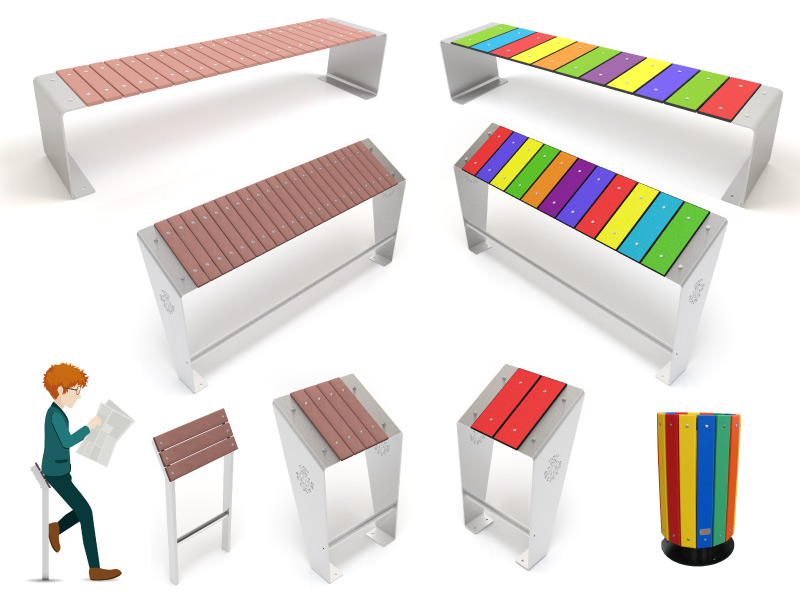
NEKO line: Benches without backrest and ischiatic supports
Hot-dip galvanised steel with WPC or colourful HDPE
Act eco- friendly and contribute to the Sustainable Development Goals SDG 11 Sustainable Cities and Communities and SDG 12 Responsible Consumption and Production! Furnish your spaces with urban furniture from manufacturers who commit to sustainability and produce locally!
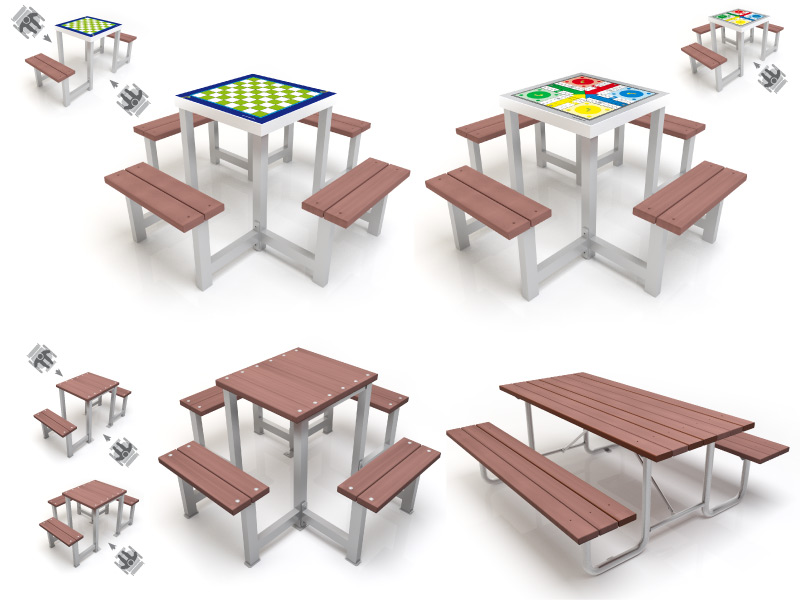
TABLES made of WPC – Inclusive urban furniture
Mobipark ensures the production of sustainable urban furniture in proximity and with large durability.
